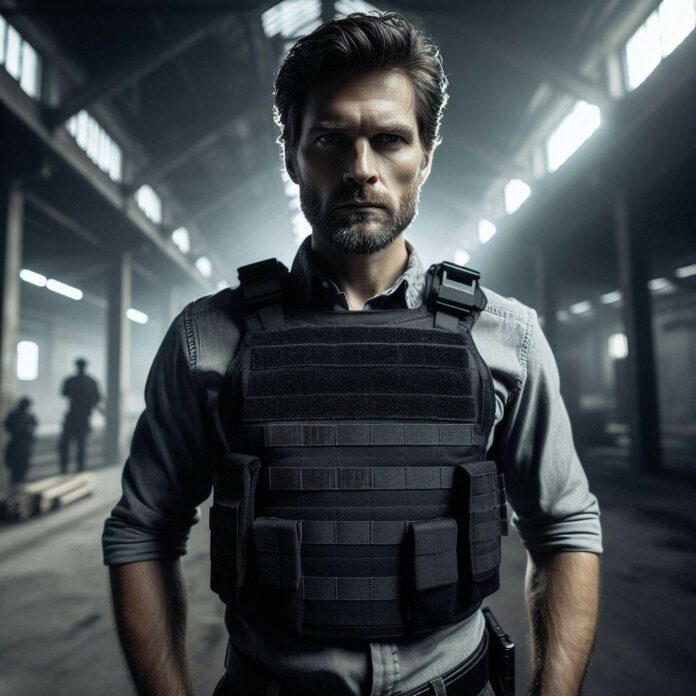Understanding the difference between a tactical vest and a bulletproof vest is essential, especially for those in professions that require protective gear. While both vests serve distinct purposes, they have different designs, features, and levels of protection.
Tactical vests offer convenience and functionality by providing storage options for essential gear, such as ammunition, radios, and first aid kits.
They are versatile and customizable to meet the specific needs of the wearer, with features like MOLLE webbing for attaching additional equipment.
Bulletproof vests are constructed using specialized materials that can withstand and absorb the impact of bullets, such as Kevlar or other ballistic fibers.
These vests are available in different levels of protection, depending on the caliber and velocity of bullets they can withstand.
Tactical vests prioritize utility and convenience for professionals in tactical operations, while bulletproof vests prioritize protection against ballistic threats. The design and features of the two vests vary significantly, reflecting their distinct purposes.
It is crucial to understand the intended use and level of protection needed to make an informed decision regarding the appropriate type of vest.
Understanding Tactical Vests
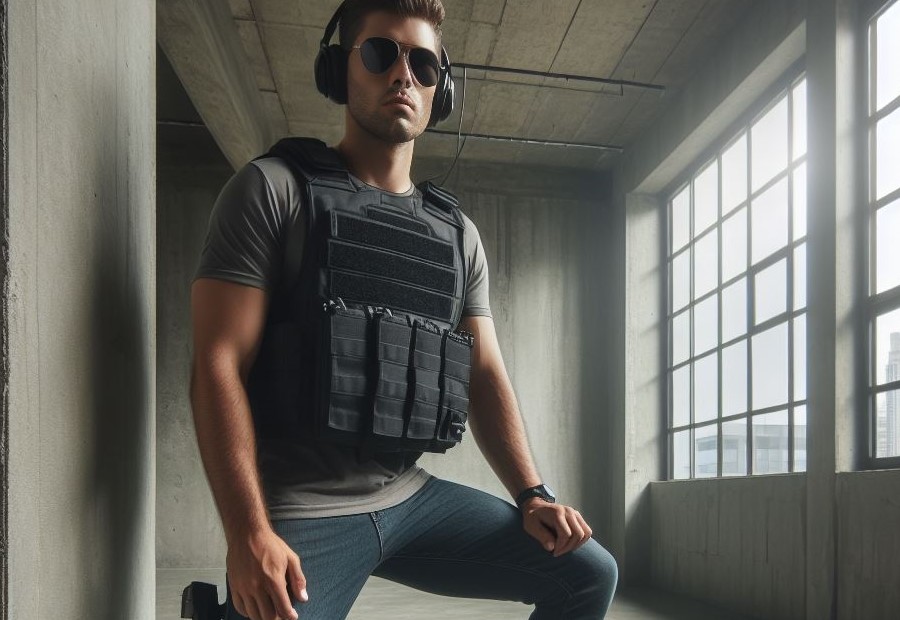
Definition and Purpose of Tactical Vests
Tactical vests play a crucial role in providing practicality, functionality, and protection to individuals involved in various tactical situations.
These vests have a specific definition and purpose, which centers around enhancing the wearer’s capability in carrying and accessing necessary equipment and tools.
Designed for military personnel, law enforcement officers, and outdoor enthusiasts, tactical vests are equipped with multiple pockets, pouches, and attachment points.
These features allow for the accommodation of items such as ammunition, radios, medical supplies, and other essential gear.
By distributing the weight of the equipment evenly, tactical vests ensure that no strain or discomfort is experienced during extended periods of use.
To withstand rugged conditions, tactical vests are constructed with durable materials and reinforced stitching. They are commonly made from abrasion-resistant fabrics like nylon or polyester, promoting longevity and resistance to wear and tear.
Additionally, some tactical vests incorporate MOLLE (Modular Lightweight Load-carrying Equipment) webbing, enabling customization and attachment of extra pouches and accessories.
Design and Features of Tactical Vests
When choosing a tactical vest, it’s important to consider the design and features that will contribute to its effectiveness and utility in various situations. Here are some key aspects to keep in mind:
- Material: Tactical vests are typically crafted from durable and sturdy materials like nylon or polyester, ensuring long-lasting wear and tear resistance.
- MOLLE System: Many tactical vests come equipped with the Modular Lightweight Load-carrying Equipment (MOLLE) system. This allows for the attachment of pouches, holsters, and other accessories, providing customization options based on your specific needs.
- Pockets and Storage: Tactical vests often feature strategically placed pockets and compartments that ensure easy access to essential gear and equipment. These well-designed pockets should offer enough space to hold magazines, radios, medical supplies, and other necessary items.
- Adjustable Straps: Comfort and mobility are essential, so tactical vests incorporate adjustable straps on the shoulders, sides, and waist. This ensures a secure and snug fit for individuals with different body types.
- Quick-release Mechanisms: During emergency situations, the ability to quickly remove or discard the vest is crucial. Tactical vests may include quick-release mechanisms like buckles or Velcro for swift removal when necessary.
- Breathability: Extended use of tactical vests can lead to discomfort due to heat and perspiration. Therefore, a good design should include features like mesh panels or ventilation systems that enhance breathability, keeping the wearer cool and comfortable.
- Reinforcements: Tactical vests often have additional layers of ballistic materials or plates in critical areas to provide added protection to vital organs against blunt force and ballistic threats.
By considering these design and feature elements, you can choose a tactical vest that meets your specific requirements and ensures optimal performance in challenging situations.
Understanding Bulletproof Vests
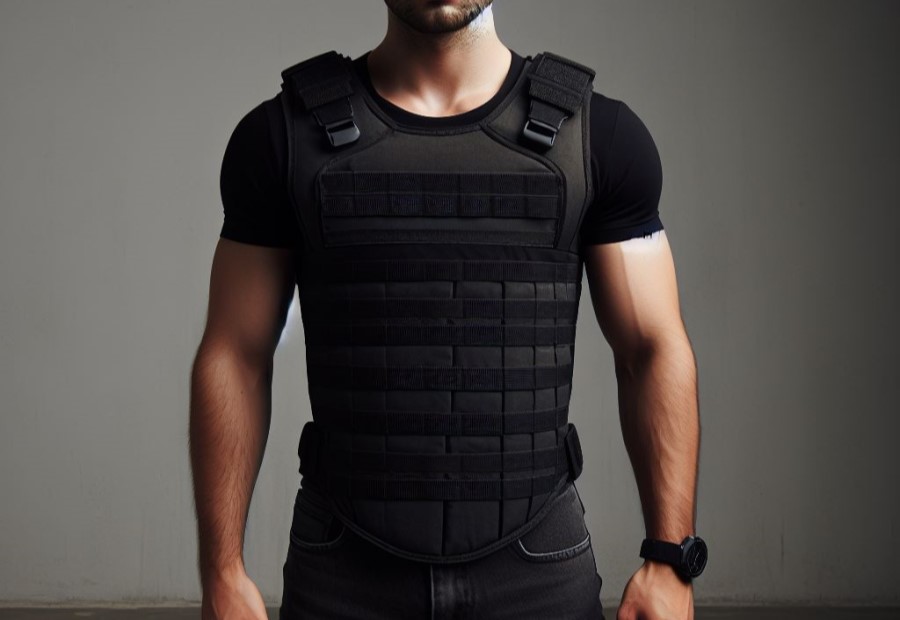
Definition and Purpose of Bulletproof Vests
The definition and purpose of bulletproof vests are crucial to understanding their role in personal protection. Here are key points to consider:
- Definition: A bulletproof vest, also known as a ballistic vest, is a protective garment designed to shield the wearer from ballistic threats, such as bullets or projectiles. It is constructed using multiple layers of specialized materials that are resistant to penetration.
- Purpose: The primary purpose of a bulletproof vest is to provide vital protection against gunfire and other ballistic threats. By absorbing and dispersing the impact energy, it significantly reduces the risk of injury or fatality to the wearer.
- Materials: Bulletproof vests are typically made using advanced materials such as Kevlar or Dyneema. These materials possess high tensile strength and are capable of stopping bullets by redistributing their energy, preventing them from penetrating the wearer’s body.
- Design: Bulletproof vests are designed to provide coverage to critical areas of the body, including the chest, back, and sometimes the sides. They often feature adjustable straps and fastenings to ensure a secure and comfortable fit.
The definition and purpose of bulletproof vests make them an essential tool for individuals who face potential ballistic threats, such as military personnel, law enforcement officers, and security personnel.
Their ability to protect against bullets enhances the safety and well-being of those who rely on them for personal defense.
Design and Materials of Bulletproof Vests
The design and materials of bulletproof vests are essential for their effectiveness and protection. Bulletproof vests are made using strong and durable materials to withstand the impact of bullets and other projectiles.
The key features and materials incorporated in the design of bulletproof vests include:
| Design Features | Materials |
| Layers of ballistic fibers | Aramid fibers (such as Kevlar) |
| Hard plates or inserts | Ceramic, steel, or composite materials |
| Pockets and straps for customization | Nylon, polyester, or similar fabrics |
| Adjustable closures | Hook-and-loop fasteners (such as Velcro) |
The layers of ballistic fibers, typically composed of aramid fibers like Kevlar, serve as the primary bullet-stopping mechanism of the vest. These fibers are incredibly strong and distribute the force of impacts, preventing bullets from penetrating.
To offer additional protection against higher caliber projectiles, hard plates or inserts made of materials such as ceramic, steel, or composites are often incorporated.
Pockets and straps allow users to customize their vests with extra accessories, while adjustable closures ensure a secure and comfortable fit.
Bulletproof vests are intricately designed and skillfully crafted to provide the wearer with maximum protection while maintaining flexibility and maneuverability.
The choice of materials and design features directly affect the effectiveness and level of protection provided by these vests.
Fun Fact: Kevlar, the most commonly used material in bulletproof vests, was initially developed by DuPont in the 1960s and is five times stronger than steel based on equal weight.
Differences Between Tactical Vests and Bulletproof Vests
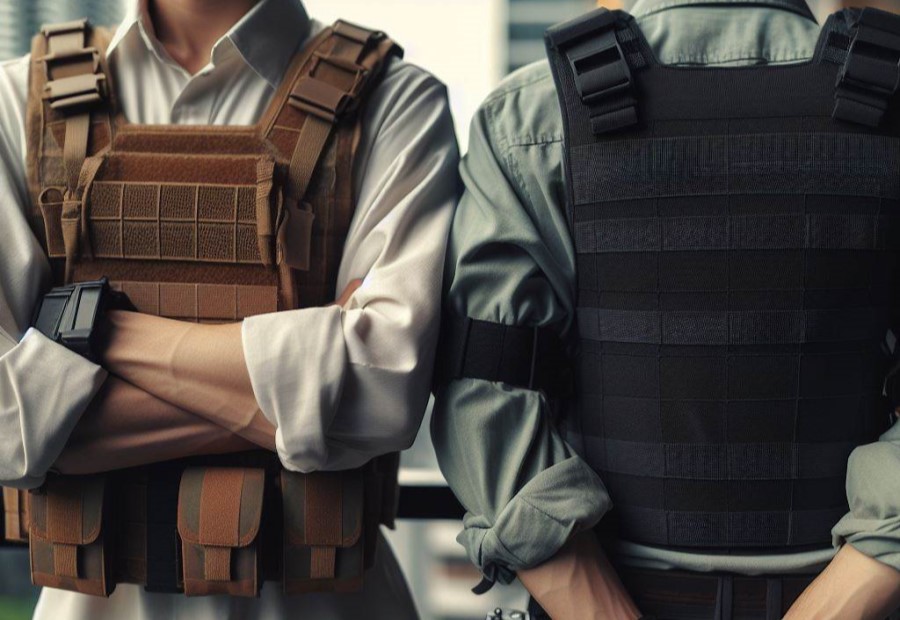
Functionality and Intended Use
| Functionality | Intended Use |
| Tactical Vests | Designed for military and law enforcement personnel |
| – Offers storage options for essential gear and equipment | |
| – Provides quick access to tools and supplies | |
| – Allows for customization based on specific mission requirements | |
| – Enhances mobility and flexibility in dynamic situations | |
| Bulletproof Vests | Designed for personal protection against ballistic threats |
| – Provides a high level of ballistic resistance | |
| – Minimizes the risk of injury or fatality from projectile impacts | |
| – Ideal for military, law enforcement, and civilians in high-risk environments |
The functionality and intended use of both tactical vests and bulletproof vests play essential roles in ensuring the safety and effectiveness of military, law enforcement, and civilian personnel operating in various scenarios.
Level of Protection
When it comes to the level of protection, there are notable differences between tactical vests and bulletproof vests. Here is a comparison:
| Tactical Vests | Bulletproof Vests |
| Tactical vests are primarily designed to enhance functionality and provide additional storage options for tactical gear. | Bulletproof vests are specifically designed to provide protection against ballistic threats, including bullets and knife attacks. |
| While tactical vests offer some level of protection due to their durable construction, they are not designed to withstand high-velocity bullets. | Bulletproof vests, on the other hand, are constructed with specialized materials that can stop bullets and significantly reduce the risk of injury. |
| Tactical vests prioritize maneuverability and versatility, allowing users to move swiftly during tactical operations. | Bulletproof vests may be bulkier and restrict movement more compared to tactical vests, as their main focus is on providing maximum protection. |
| Tactical vests typically do not have standardized protection ratings, as their primary purpose is not to provide ballistic protection. | Bulletproof vests are tested and rated according to specific protection levels, such as NIJ standards, to ensure their effectiveness against different types of ballistic threats. |
Design and Features
Tactical vests are specifically designed to cater to the needs of tactical operations and law enforcement professionals. These vests have a specific design and incorporate various features to enhance functionality.
They are typically made from durable materials like nylon or polyester, which enable them to withstand tough conditions.
One of the notable features of tactical vests is the presence of multiple pockets and compartments. These allow users to conveniently carry and organize their equipment and accessories.
Additionally, tactical vests often include MOLLE (Modular Lightweight Load-carrying Equipment) webbing, which allows for easy attachment of additional pouches and accessories as needed.
To ensure a secure and comfortable fit, tactical vests come with adjustable straps and buckles. This enables users to customize the fit according to their preference.
Some designs even incorporate a quick-release system, which can come in handy during emergency situations by allowing for easy removal of the vest.
In contrast, bulletproof vests are specifically designed to provide protection against ballistic threats. These vests are made from layers of strong but lightweight materials such as Kevlar or ballistic ceramic plates.
The design of bulletproof vests primarily focuses on achieving optimal ballistic protection, with less emphasis on carrying capacity and additional features.
Bulletproof vests are available in different levels of protection, such as Level II or Level IIIA. They also come with adjustable straps and fasteners to achieve a snug fit and ensure proper coverage of vital areas.
While both tactical vests and bulletproof vests prioritize functionality and user safety, their design and features are tailored to meet their specific purposes.
Choosing Between a Tactical Vest and a Bulletproof Vest
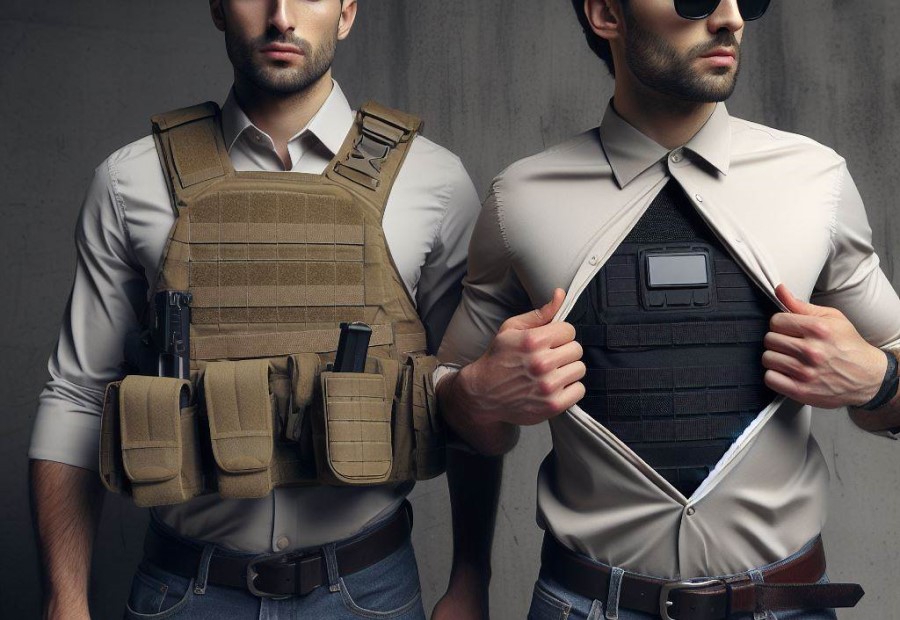
When it comes to selecting the right gear for your specific needs, it’s important to understand the difference between a tactical vest and a bulletproof vest.
Considerations for Tactical Vests
- Fit: One of the most important considerations for tactical vests is the fit. The vest should fit snugly to the body to ensure comfort and prevent any movement or chafing during physical activity.
- Adjustability: Look for tactical vests that offer adjustable straps or Velcro closures. This allows you to customize the fit according to your body shape and size.
- Mobility: The tactical vest should not restrict your movement or agility. Ensure that it allows you to move freely and perform tasks without any hindrance.
- Pockets and Compartments: Consider the number and size of pockets and compartments in the tactical vest. It should have enough storage space for your essential equipment and accessories.
- Durability: Tactical vests are designed for rugged use, so durability is crucial. Look for vests made with high-quality materials that can withstand wear and tear.
Considerations for Bulletproof Vests
When it comes to considering bulletproof vests, there are various important factors to take into account. First and foremost, it is crucial to understand the level of protection that a bulletproof vest offers.
Different vests are designed to withstand different types of ammunition and provide varying levels of protection. It is essential to ensure that the vest you choose meets the required ballistic standards for your intended use.
Comfort and mobility are also key considerations when it comes to bulletproof vests. Optimal comfort and freedom of movement are especially important if the vest is intended for extended wear.
Look for vests that have adjustable straps and are made from lightweight materials to enhance comfort without compromising protection.
Durability and lifespan are vital factors to evaluate when selecting a bulletproof vest. It is important to assess the vest’s durability to ensure it can withstand the demands of its intended use.
Consider factors such as the material used, the quality of stitching, and the overall construction of the vest to ensure that it remains effective and reliable over time.
The fit and size of the vest are crucial for providing maximum protection. It is important to choose a vest that fits snugly but still allows for a full range of motion. Most companies provide size charts to assist you in finding the perfect fit.
If you require a vest for undercover or covert operations, concealability is an important consideration. Look for vests that are designed to be easily concealed under clothing. Opt for low-profile options that do not compromise on protection.
When considering bulletproof vests, it is essential to keep these factors in mind to ensure that you select the most suitable option for your safety and protection needs.
Remember to consult with professionals or experts in the field for personalized advice. Stay informed and make an informed decision for your security.
Please note that these considerations are meant to guide the selection process and should not replace professional advice or consultation. It is crucial to consult with knowledgeable individuals or organizations to ensure that the vest meets your specific requirements.
Frequently Asked Questions
What is the difference between a tactical vest and a bulletproof vest?
Tactical vests and bulletproof vests serve similar purposes of protection, but they have distinct differences.
How are tactical vests and bulletproof vests used in the military?
Tactical vests are commonly used by the military for scouting missions, while bulletproof vests are utilized by special forces units and SWAT teams.
Can a tactical vest hold rifle magazines?
Yes, tactical vests typically have MOLLE slots or pouches where rifle magazines or other essential equipment can be securely stored.
Do bulletproof vests provide protection against spike attacks?
No, bulletproof vests usually do not offer protection against spike attacks. Spike protection is more commonly found in plate carriers or tactical body armor vests.
Are there specific body armor designs for women?
Yes, body armor for women often has unique designs to accommodate their specific needs and provide a more comfortable fit.
What level of protection do hard armor plates provide?
Hard armor plates, commonly used in plate carriers, provide the highest level of protection against ballistic projectiles, such as rifle rounds and even improvised explosive devices (IEDs).

